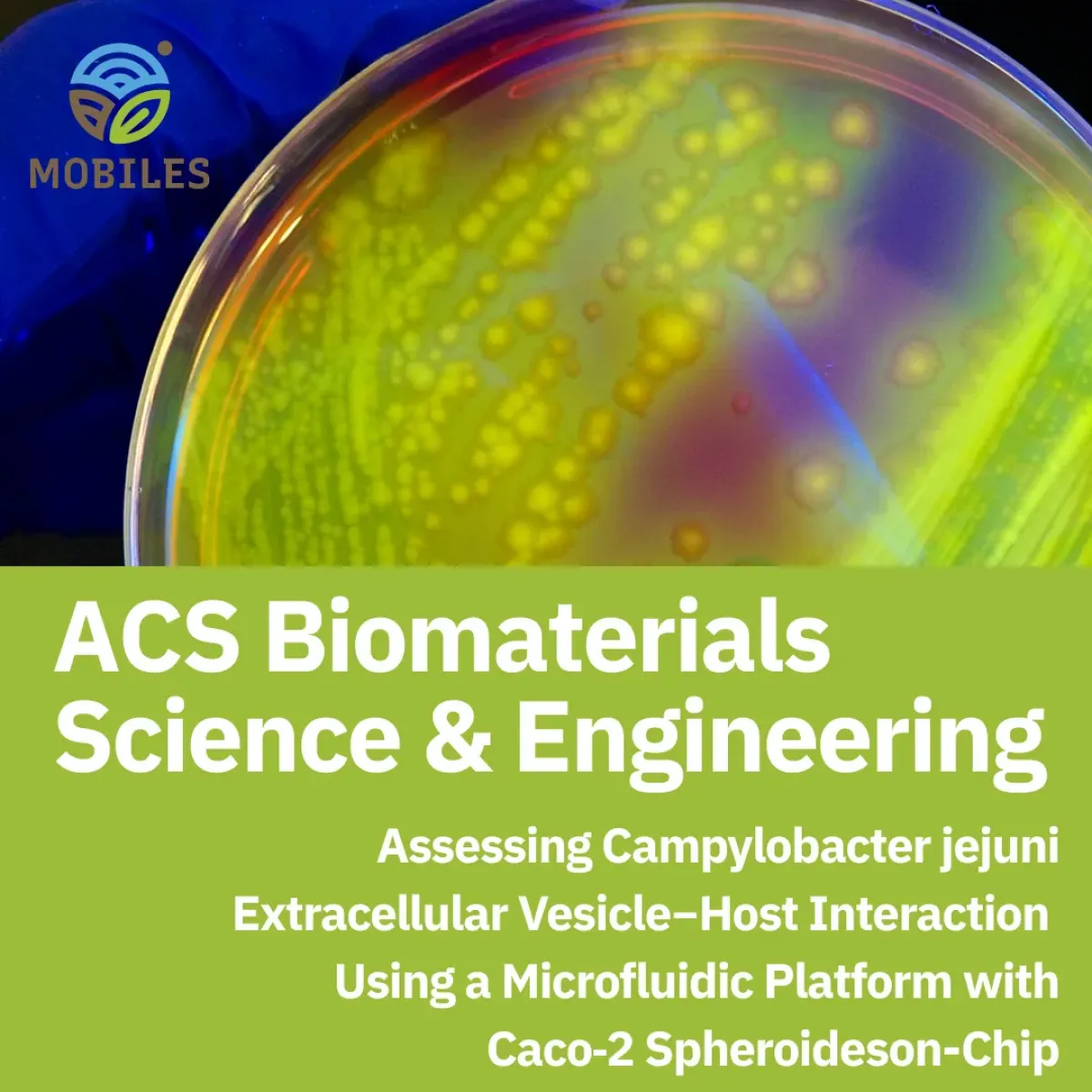
This study provides new insights into how foodborne bacteria interact with our intestinal cells, using cutting-edge microfluidic technology.
Campylobacter jejuni is one of the world’s leading causes of foodborne illness. Found mainly in undercooked poultry, this spiral-shaped bacterium can cause severe diarrhea, abdominal pain, fever, and—in rare cases—serious complications such as Guillain-Barré syndrome or chronic inflammatory diseases. Yet, despite its impact on global health, the details of how C. jejuni invades and damages the human gut remain poorly understood.
One of the mysteries is the role of extracellular vesicles (EVs)—tiny bubble-like particles released by the bacteria. These EVs carry proteins and toxins that may help the pathogen breach the intestinal barrier. However, traditional lab models, such as flat (2D) cell cultures, oversimplify the gut environment, while animal models differ too much from humans to provide reliable answers.
To overcome these limitations, researchers have now developed a microfluidic “gut-on-a-chip” platform—a miniature device that mimics the 3D structure and environment of the human intestine.
A Gut Model That’s Closer to Reality
In the new system, human intestinal epithelial cells (Caco-2) spontaneously formed spheroid-like structures, tiny 3D clusters resembling the architecture of real gut tissue. This is a major step forward compared to conventional 2D plates, as the 3D organization better reflects how cells grow and function inside the body. When exposed to Campylobacter’s EVs, the differences between 2D and 3D cultures were striking. In traditional 2D plates, bacterial secretions caused up to 60% loss of cell viability. In contrast, the 3D spheroid structures were much more resistant, highlighting the protective effect of realistic tissue organization.
Real-Time Monitoring of Infection
The device was also equipped with microelectrodes that enabled scientists to track, in real time, how EVs interacted with and crossed the intestinal barrier. Measurements of transepithelial electrical resistance (TEER) confirmed that Campylobacter EVs could slip between cells via paracellular diffusion, mimicking how pathogens exploit natural weak spots in the gut lining.
Why This Matters
This study demonstrates that microfluidic “organ-on-a-chip” technology can reveal details of host–microbe interactions that traditional methods miss. By more accurately mimicking the human gut, the model:
Campylobacter remains a major food safety challenge worldwide, with just a few hundred bacterial cells enough to make people sick. By helping scientists better understand how its EVs damage human cells, this new model paves the way for developing better preventive and therapeutic strategies against gastroenteritis and related complications. This “gut-on-a-chip” approach may also inspire future research on other intestinal pathogens, advancing our ability to fight infectious diseases at the source—the human gut barrier.
Assessing Campylobacter jejuni Extracellular Vesicle–Host Interaction Using a Microfluidic Platform with Caco-2 Spheroides-on-Chip
Authors: Silvia Tea Calzuola, Jeanne Malet-Villemagne, Debora Pinamonti, Francesco Rizzotto, Céline Henry, Christine Péchaux, Jean Baptiste Blondé, Emmanuel Roy, Marisa Manzano, Goran Lakisic, Sandrine Truchet, and Jasmina Vidic
Full publication here